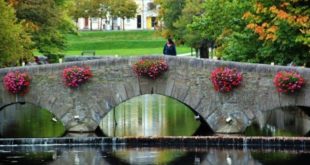On a trip to Bulgaria you have an obligatory stage in the city of Plovdiv , currently the second largest city in the country with 350,000 inhabitants.
Located in the High Valley of Thrace , when you go closer to Plovdiv you will notice that in front of the mountainous landscapes characterize the regions that surround it, the city is situated in a great plain that opens on both banks of the Maritsa river .
It is a region of Bulgaria dedicated to agriculture and where sunflower fields abound.
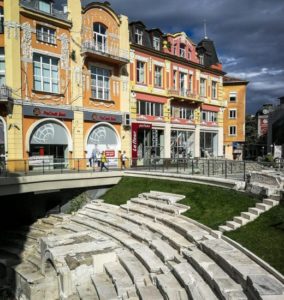
The city of Plovdiv has two clearly differentiated zones.
If you arrive from Sofia , the first image you will have of Plovdiv will show you an ugly residential city with large blocks of flats built with the gray architecture of the Soviet era .
But do not be scared, it’s its adjoining areas, and what you’re going to visit is the historic city that spans several hills, which is on the other side of the river that crosses the city.
History Plovdiv
Indeed, Plovdiv has a very long history, dating back to around 4,000 BC, when the Thracians from Asia arrived in this region, making it one of the oldest cities in Europe .
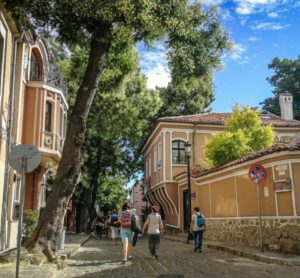
The center of the city and the historic city are located between six hills, which was the initial settlement of the first settlers of Plovdiv .
The fortress built was the largest in all of Thrace , and after a period of occupation by the Macedonians, in the first century Plovdiv was incorporated into the Roman Empire .
It took the Romans more than 100 years to conquer the city, and during that previous period they had a long relationship of respect and coexistence with the Thracians.
Of the Roman occupation you will have several samples during your visit to see the important archaeological remains that are still preserved in the city.
After several historical ups and downs, being in the hands of Byzantines, Bulgarians, and even the Crusader Knights , in 1364 it was occupied by the Ottomans, so that Byzantine architecture was replaced by oriental style buildings.
During the Renaissance , Plovdiv had a great boom, whose expression are the large mansions built in the ancient city , with great ornamentation.

After the end of the Russo-Turkish War of 1878 and the founding of the new free state of Bulgaria , the city spent a period of seven years in which it remained as an autonomous community under Ottoman rule.
Plovdiv, European City of Culture 2019
It is currently an attractive city with great tourist interest (much more than Sofia) that has been declared European City of Culture 2019 , which is giving an economic boost.
In addition to this celebration, an extensive program of cultural activities will be developed that complements the various cultural activities that usually take place during the year.
What is a must see in Plovdiv
A main axis in your visit to Plovdiv will be the long and wide Alexander Ipedestrian street that joins a park with the square where the Dzhumaya mosque is located .
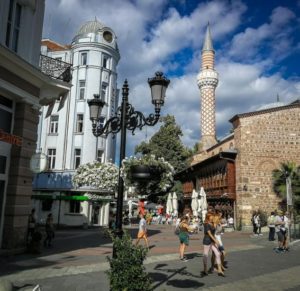
It is an eminently commercial street with modern establishments and pretty baroque houses with colorful facades.
It is a historic area in which a process of rehabilitation of houses and facades is being completed, whose final milestone is undoubtedly the celebration of the events linked to the aforementioned declaration of European Cultural City 2019 .
Roman Stadium of Plovdiv
Next to the mosque you will find the remains of the old Roman stadium of the second century, whose layout runs below the aforementioned Alexander I street .
In that place you can find a reproduction in stone of this Roman stadium, and you can go down to the base of it, as well as sit on the terrace of a cafeteria located opposite the stretch of stands.
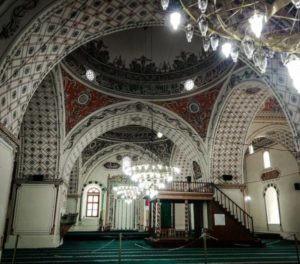
Dzhumaya Mosque of Plovdiv
The aforementioned Dzhumaya mosque was built in 1369 and is on the site of the ancient Byzantine cathedral that the Turks burned after the occupation of the city.
Although as you know in most countries it is not allowed to enter the mosques if you are not Muslim, in this case you can access the door and see inside.
There you will see its huge carpet that you will not be able to step on, and its decoration in which the white color of the walls is the protagonist.
Outwardly you will notice the contrast of the large building of the mosque with baroque buildings with colorful facades that surround it in the Rimsky Stadion square where it is located.
It is an outstanding tourist point because there is also the tourist office and the headquarters of the Plovdiv Foundation 2019 .
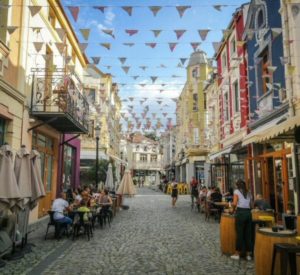
In the mosque building there is a Turkish patisserie and tea shop, where you can taste the typical Arabic baklavas .
Regarding the Muslim presence in Plovdiv , it should be noted that this Bulgarian city is about two hours from the Turkish border and three hours from Istanbul.
Because of this closeness it is usual for many Turks to arrive on weekends to Plovdiv to go to the various casinos in the city, since gambling is forbidden in Turkey.
Old City of Plovdiv
But the main tourist attraction of Plovdiv you will find on your walk through the Old City, an area that stretches over the three hills that were initially inhabited by the Thracians .
When you reach the top of the main hill, you will see remains of the wall that the Romans built on the original Thracian fortification .
During your ascent to the hill of the Old City you will walk through streets with cobblestone roads and leafy trees, which are closed to traffic
Above all you will be struck by the houses of the eighteenth and nineteenth centuries Balkan baroque style , most of which are renovated and have become small museums , such as the decorative arts , or an old pharmacy .
You will also see galleries of artists and some souvenir or craft shop .
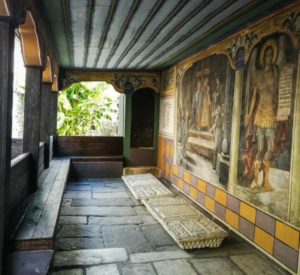
A corner to stand out is the door that opens on a walled stretch where there is a nice house that houses an Ethnography museum .
There is also a beautiful Orthodox church with the bell tower separated from the main building, because during the Turkish occupation the Christian churches were not allowed to have bell towers, and these only began to be built after their departure.
Other corners to highlight are known as Calle de los Artesanos , which are located in typical houses.
Or the place where was located an old monastery of dervishes of the XIX century, brotherhood of the Muslim religion that is characterized by the dances of its monks making circles without stopping.
Now the old building houses a restaurant with a cozy wooden decoration, in whose basement room you can see remains of the old Roman wall .
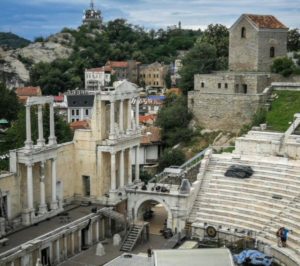
Roman Theater of Plovdiv
Finally, your visit to the Old City of Plovdiv will be incomplete if you are not going to visit the Roman theater of the first century that was discovered during the communist era, and against what was then usual, in this case it was preserved.
Surely you will be surprised by its location on the side of a hill, and its large dimensions, as it had capacity for some 3,500 people.
Today it is used for shows and concerts and has become not only the iconic monument of Plovdiv , but also of Bulgaria , along with others such as the Rila monastery .
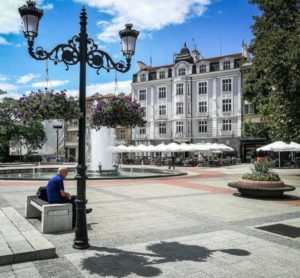
Where to stay in Plovdiv
Looking forward to your stay in Plovdiv , I would like to recommend you a small boutique hotel with great charm where we stayed in our trip, which is located in the very center of the city,
This is 8 1 \ 2 Art Guest House , which you can check to get excellent ratings on platforms such as TripAdvisor and Booking .
Here you have more information and you can book at Booking .
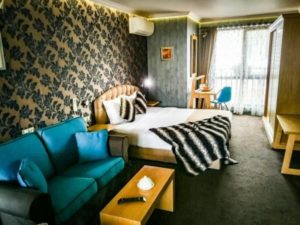
 Countries To Travel Travel Tips and Plans
Countries To Travel Travel Tips and Plans

